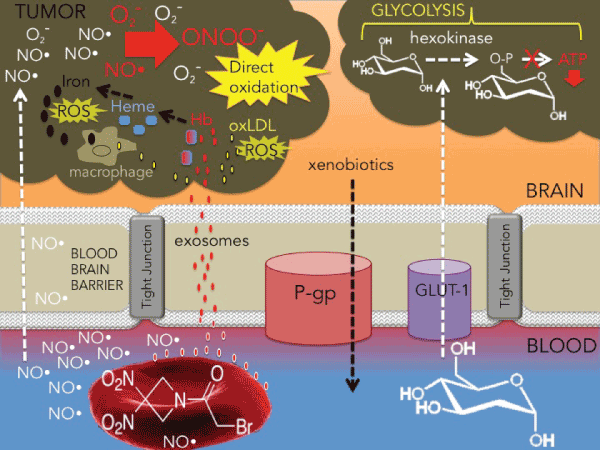
 |
| Figure 3: In this illustration, on the left, the RRx-001-bound red blood cell is depicted as a ‘catalytic converter’ of nitrite to nitric oxide under prooxidant conditions in the vicinity of the tumor. As a free radical gas, nitric oxide a) diffuses through the blood brain barrier and combines with endogenously elevated levels of superoxide in the tumor to produce the potent biological oxidant peroxynitrite (ONOO-) b) oxidizes the internal milieu of the red blood cell (RBC) resulting in the shedding of heme and LDL-containing microvesicles, theoretically passing the blood brain barrier and amplifying oxidative stress in the tumor. On the right, 2-deoxyglucose, which is taken up by GLUT-1, is a substrate for hexokinase but not phosphoglucose isomerase so 2-deoxyglucose-6-phosphate accumulates in the cell, inhibits hexokinase and reduces glycolytic flux, resulting in ATP depletion. The ATP-dependent P-gp pump, responsible for the efflux of xenobiotics across the BBB, is also depicted. |